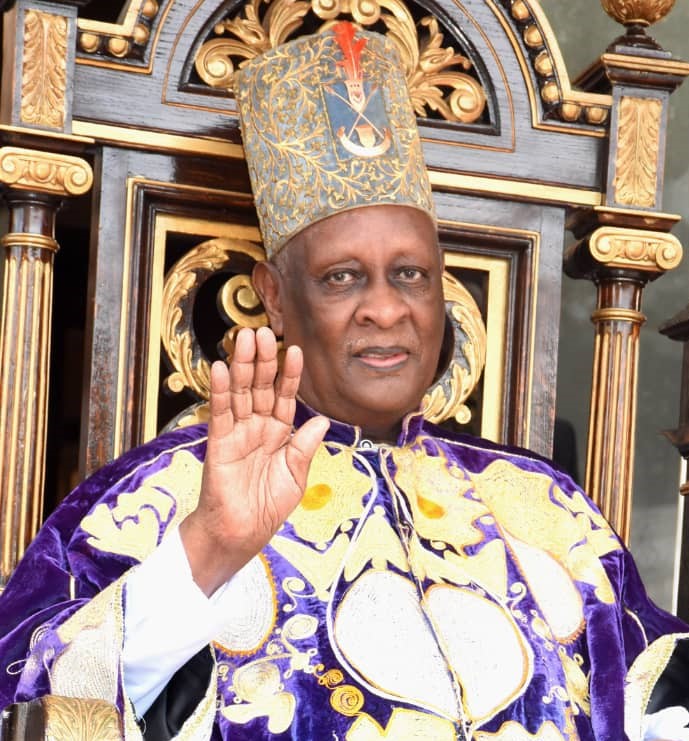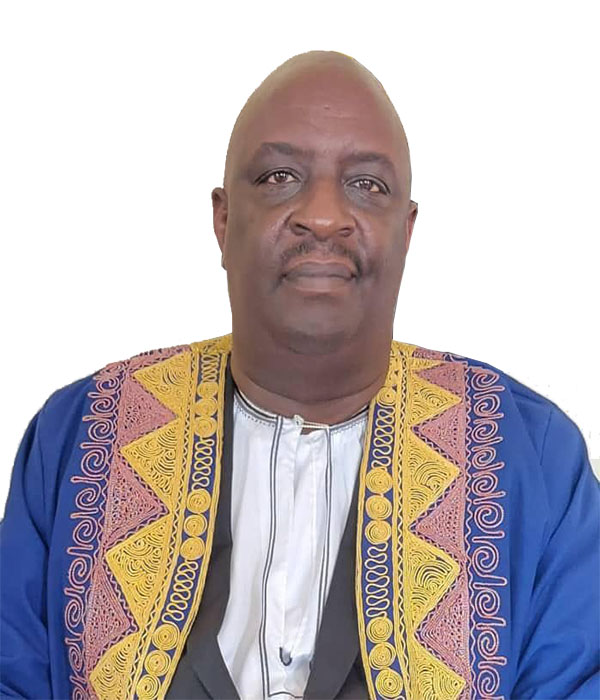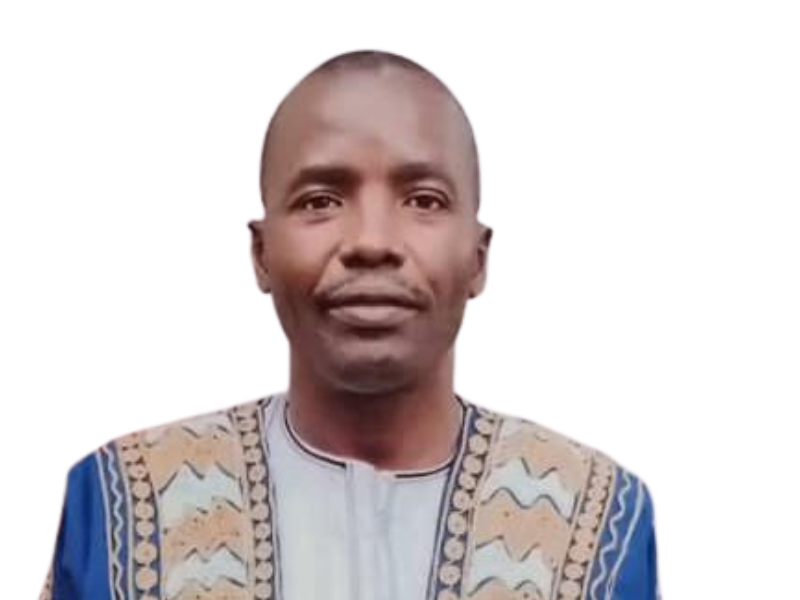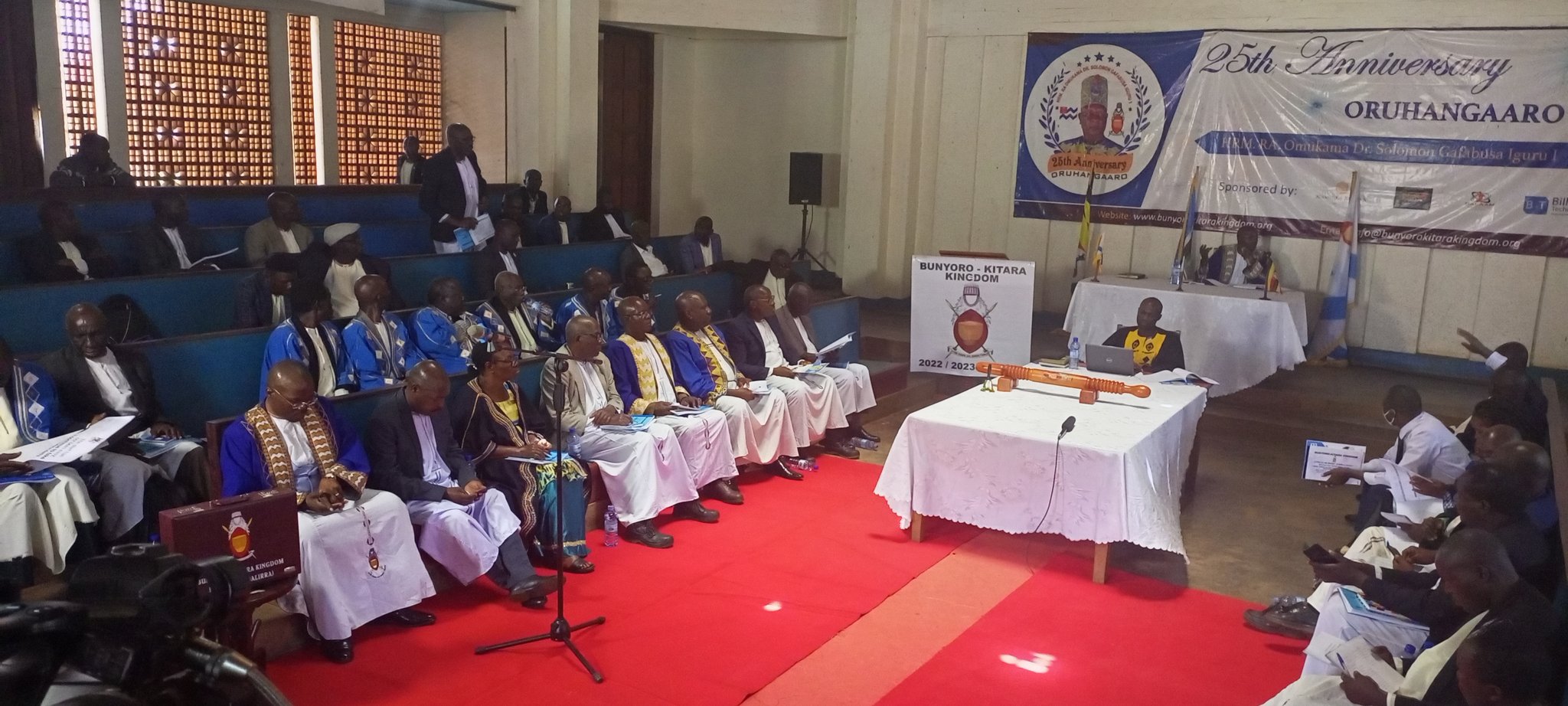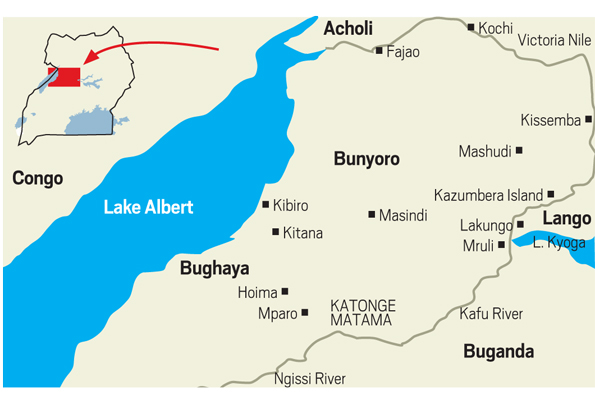
The Banyoro live in western Uganda to the east of Albert they inhabit the present districts of Hoima, Masindi, Kibale, Kiryandongo, Buliisa, Kagadi, and Kakumiro. They speak a Bantu language and their origins, like other Bantu can be traced to the Congo region. The Banyoro live in scattered settlements in the populated parts of their country. Traditionally, Banyoro are organized under a King (Omukama).
i. The People
The people of Bunyoro are known as Banyoro (singular Munyoro). They belong to the Kingdom of Bunyoro-Kitara, Western Uganda, in the area to the immediate East of Lake Albert. Their cultural leader is the Omukama (king). Bunyoro-Kitara Kingdom is composed of the districts of Hoima, Masindi and Kibale. The native language is Runyoro-Rutooro, a bantu language. Runyoro-Rutooro is also spoken by the people of Toro Kingdom, whose cultural traditions are similar to those of the Banyoro.
Inspite of Western cultural imperialism, the Banyoro have maintained their rich cultural heritage. While many Western cultural elements have been assimilated, many Banyoro proudly uphold the ancient traditions of their ancestors. Under the leadership of H.M. Solomon Gafabusa Iguru I, great efforts are underway to revive many of their cultural traditons, and document them for posterity. Schools are encouraged to include traditional kinyoro (adjective) culture in the curriculum.
ii. Kinyoro Names
Traditionally, a Munyoro had just one name (ibara) and one empaako (name of praise) which were given to him/her shortly after birth. This name has always been a kinyoro name. Officially, the name is given by clan elders; but practically, the will of the parents is paramount in this decision. Like most African names, kinyoro names are actually words or phrases in the Runyoro language; and they have a meaning. This meaning is based upon the prevailing circumstances in the family or clan at the time of the child’s birth. For example, the name Nyamayarwo (meat for Death) implies that the parents are prepared for the worst, because many of their children have already died. Names like Ndyanabo (I eat with evil people), Nyendwooha (who loves me? no one), Nsekanabo ( I laugh with the evil people), etc. portray the sentiments of a parents very ill at ease with their neighbors.
Following the introduction of Christianity, in the late 17th century, a new class of names was created. It was the Christian name, given upon baptism. Many Banyoro took on English names like Charles, Henry, George, etc. for their Christian names; while others took names from the Bible, like Matayo (Matthew), Yohana (John), Ndereya (Andrew) etc. Let it not be forgotten that Islam is an important part of Bunyoro’s religious heritage; so all Banyoro of Islamic persuasion will have an Islamic name, in addition to their kinyoro name. Names like Muhamadi (Muhamad/Mohamed), Isimairi (Ismael), Arajabu (Rajab), Bulaimu (Ibrahim), etc. are common.
There are special names given to twins and the children following twins. These names are standard. When twin boys are born, the first one to emerge is Isingoma, the other Kato. The female versions are Nyangoma and Nyakato, respectively. If a person is named Kaahwa, he/she comes after twins.
iii. Empaako
Unique to Bunyoro and Toro are praise names, empaako. These names are given at the same time a child is given its regular, kinyoro name. They are special names used to show love and respect. Children call their parents by the empaako, not the regular name. The empaako is also the salutation when the Banyoro greet each other. Instead of the Western “Good morning, John?” the Banyoro substitute the empaako for John. There are eleven empaako names, shared by all Banyoro and Batooro. They are Abwooli, Adyeeri, Araali, Akiiki, Atwooki, Abbooki, Apuuli, Abbala, Acaali, Ateenyi and Amooti.
The official empaako of the Omukama is always Amooti, regardless of what it used to be before he became the Omukama. Another, very special, empaako reserved for the Omukama alone is Okali. This is not one of the eleven, and can never be used by common people.
Contrary to the general rule that kinyoro names have a meaning, the empaako names do not have a kinyoro meaning; because they are not, really, words in the Runyoro-Rutooro language. They are words (or corruptions of words) in the Luo language, the original language of the Babiito, who invaded and colonized Bunyoro from the North. The Banyoro and Batooro have, however, assimilated these luo names into their language, and even attempted to append some meaning to them. For example, Ateenyi is the great serpent of River Muziizi; Abwooli is the cat; Akiiki is the savior of nations; Araali is lightning, etc.
iv. The Clan
Every Munyoro belongs to a clan. The clan is the collective group of people who are descended from the same ancestor, and are, therefore, blood relatives. Long before the tradition of kingdoms, the Banyoro lived in clan groupings. Areas of the land were named after the clan which lived there. For example, Buyaga was the area of the bayaga clan, Buruli for the baruli clan, Bugahya for the bagahya clan, etc..
The clan is very important to a Munyoro, man or woman. It is important that one is well aware of the clan relationships on both mother’s and father’s side of the family. This is crucial in order to avoid in-breeding. One can not marry in one’s own clan or in that of his/her mother’s. Marriage to one’s cousins, no matter how far removed, is not acceptable. An exemption from this rule is claimed by the princes and princesses of the kingdom. In their effort to maintain their “blue blood lines” it is not unheard of for the royals of Bunyoro, Toro and Buganda to marry very close to their own or their mothers’ clans.
